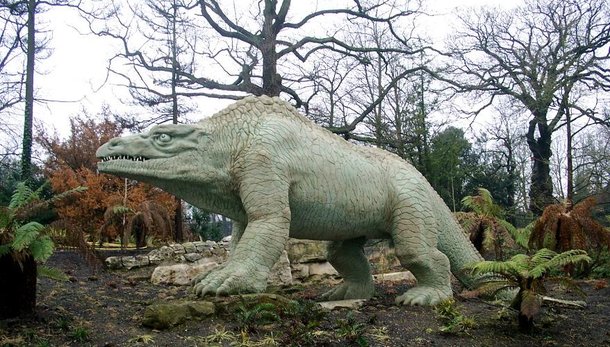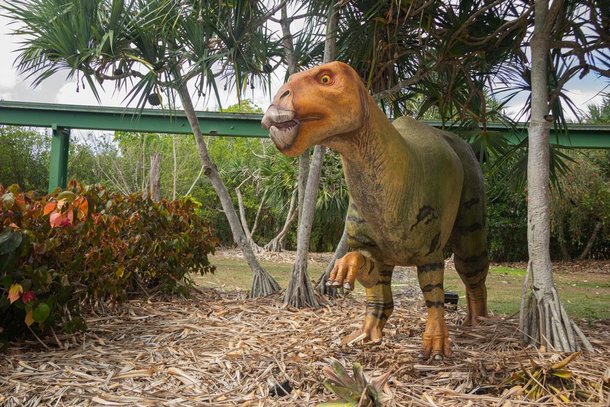Em novembro de 1853, ninguém menos que a rainha Vitória interrompeu alguns dos seus deveres para ir até um terreno enlameado no sul de Londres e entrar em um galpão de madeira. Ali, estava sendo montada a primeira exposição do mundo com réplicas em tamanho real — ou algo próximo disso — de dinossauros. E tudo só foi possível, graças ao trabalho de Benjamin Waterhouse Hawkins.
Hawkins foi um escultor que ou anos construindo suas esculturas de dinossauros. Com poucos registros fósseis e materiais de referência que existiam na época, ele precisou se basear em ilustrações bidimensionais. Embora tenha sido muito celebrado pela sociedade londrina, ele também foi criticado por imprecisão científica, em uma época que a paleontologia começava a ganhar cada vez mais espaço entre os cientistas.
Um Steven Spielberg vitoriano

Benjamin Waterhouse Hawkins nasceu em Londres em 8 de fevereiro de 1807. Naquela época, o estudo da paleontologia ainda estava longe de ser algo bem estabelecido — a palavra dinossauro foi usada pela primeira vez em 1840, por Richard Owen (depois de Darwin, ele foi o naturalista vitoriano mais importante da Inglaterra). Apesar disso, Hawkins já demonstrava interesse por estudos de anatomia animal.
Nesta época em que a paleontologia ainda nem havia adquirido um nome, Owen era visto como um dos principais especialistas na área. Foi por esse motivo que ele e Hawkins foram convidados pelos organizadores do Crystal Palace a criar uma atração pré-histórica de 33 animais extintos em tamanho natural. Owen seria o conselheiro, enquanto Hawkins seria o designer, arquiteto, artista e engenheiro, planejando a melhor maneira de “ressuscitar” os dinossauros.
A abertura do parque

Hawkins trabalhou de setembro de 1852 ao início de 1855 em um estúdio no Crystal Palace — que era pouco mais do que um grande galpão cercado por lama — para criar as esculturas. Foram utilizados moldes de barro, gesso, barras de ferro, concreto e tijolos para dar vida aos dinossauros.
Ao todo, quatro dinossauros foram criados, além de algumas dezenas de animais menores. Na véspera de Ano Novo de 1853, Hawkins convidou mais de 20 cientistas, jornalistas e pessoas notáveis para um jantar dentro de uma das esculturas do Iguanodon. O modelo foi aberto na parte de trás para acomodar uma mesa e cadeiras, com mais espaço criado em torno dele para convidados adicionais que não podiam encaixar diretamente no interior.
O Crystal Palace Park foi aberto oficialmente em 1854 pela rainha Vitória (que já havia visto as peças algum tempo antes). A cerimônia contou com 40 mil convidados boquiabertos. Era a primeira vez que uma paisagem tridimensional continha um grupo de dinossauros gigantes.
O sucesso do Crystal Palace Park foi tão grande, que em pouco tempo Hawkins foi convidado a viajar aos Estados Unidos fazer palestras sobre a exposição. Ele também foi convidado a criar esculturas semelhantes que ficariam expostas no Central Park, mas o material foi destruído e Hawkins nunca mais trabalhou criou outras peças.
Anos depois, quando a paleontologia começou a ganhar mais destaque e fósseis eram descobertos, o trabalho impreciso de Hawkins começou a ser criticado. Ele morreu em 1894, a suas contribuições para a paleontologia não foram mencionadas por muito tempo.
Fonte: MegaCurioso.